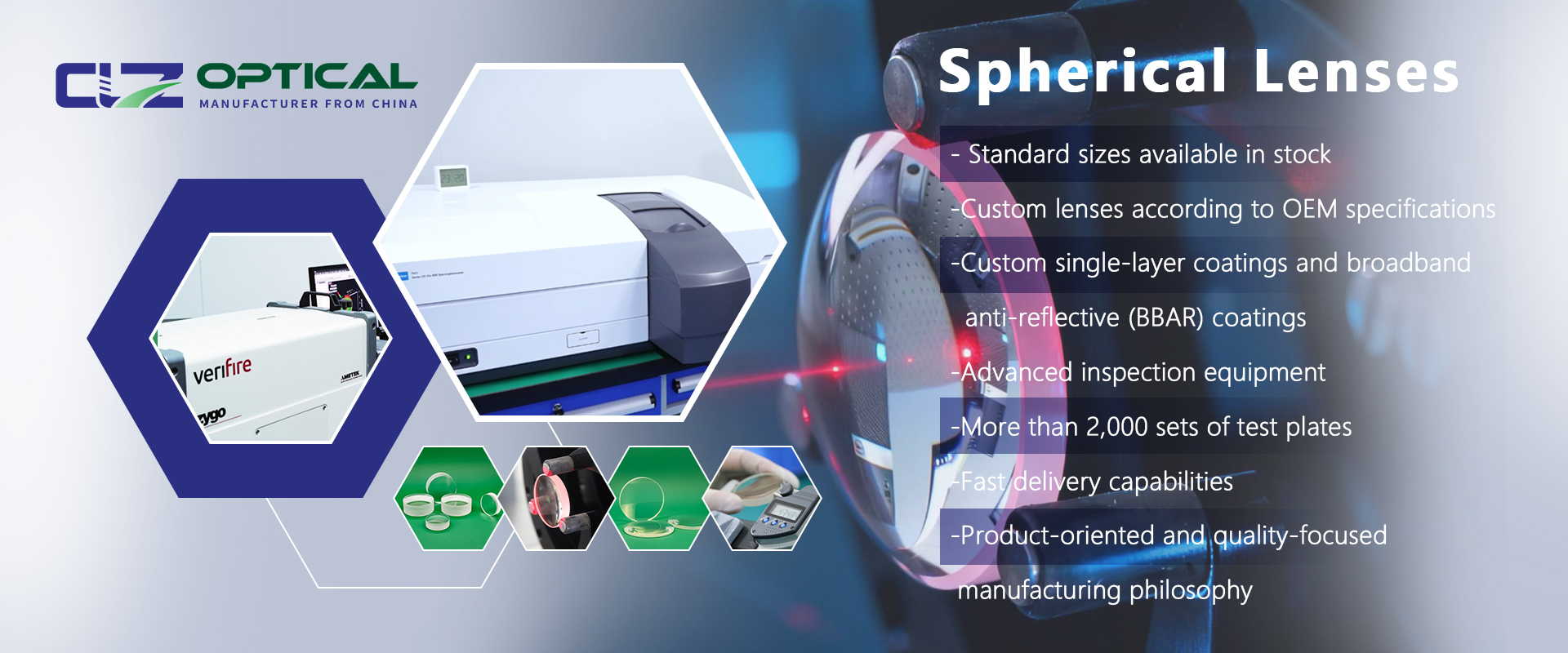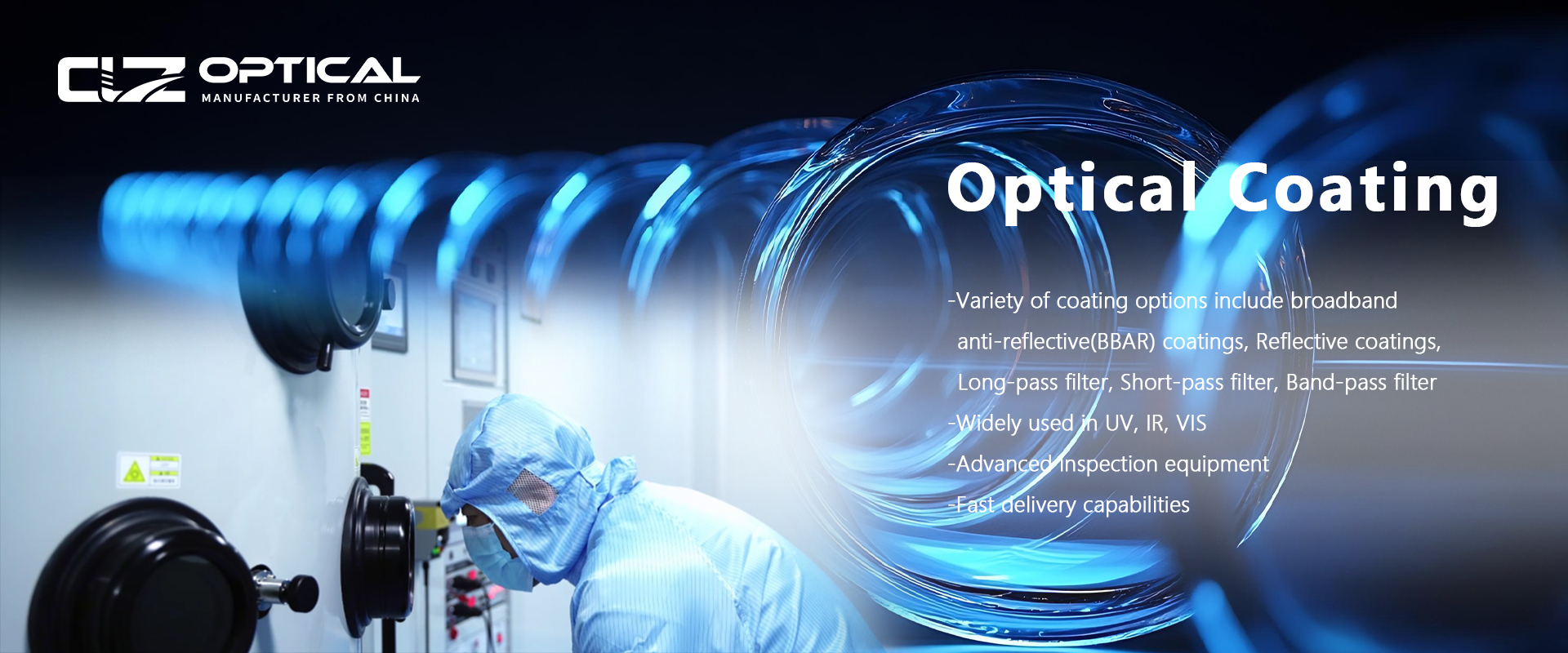What Are Cylindrical Lenses?
Aug. 07, 2025
In precision optical systems, cylindrical lenses hold a significant position due to their unique geometric configuration. Unlike common spherical lens, their optical surfaces possess curvature only in one direction (cylindrical surface), while remaining flat in the perpendicular direction. This asymmetric design grants them the ability to directionally manipulate light, effectively addressing numerous application requirements demanding linear optical transformation,such as laser focusing.They have become key components in modern optoelectronic technology.
1. Core Optical Characteristics
1.1 Asymmetric Surface Configuration
The essential characteristic of a cylindrical lens lies in the directivity of its surface shape. It exhibits continuous cylindrical curvature along a chosen axis direction (e.g., horizontal axis), forming an arc similar to the side of a cylinder. Along the axis orthogonal to this direction (e.g., vertical axis), its surface is completely flat, producing no optical curvature. This single-direction curved structure is the physical basis for its functionality.
1.2 Directional Selectivity
When light passes through a cylindrical lens, its behavior exhibits strong direction dependence. Along the axis where the lens surface is curved, light behaves as if passing through a traditional spherical lens—converging or diverging based on whether the surface is convex or concave—following the fundamental laws of optical refraction. However, along the perpendicular, flat axis, the light undergoes almost no directional deflection, maintaining its original propagation path. This asymmetric light transformation results in the final formed image or spot not being a focused point, but rather a distinct bright line.
1.3 Beam Reshaping
The core value of a cylindrical lens lies in its ability to alter the cross-sectional shape of a light beam. It can transform a circular spot from a point source or laser into a thin, uniformly distributed linear spot at a specific working distance. Simultaneously, for existing line sources, or linear beams with inherent divergence or convergence properties, the cylindrical lens can effectively focus them (making the light more concentrated, the spot narrower and brighter) or collimate them, causing the light to tend towards parallel propagation. This capability for precise one-dimensional control of beam morphology fundamentally distinguishes it from rotationally symmetric optical elements.
2. Major Application Fields
2.1 Industrial Inspection & Material Processing
In the fields of industrial automation and quality control, cylindrical lenses primarily undertake the critical task of generating and processing linear laser beams. They are applied in real-time online measurement of the diameter precision of wires (such as metal wire, optical fiber), or continuous monitoring of thickness uniformity in sheet materials like paper, plastic (PC, PMMA) film, and glass panels. The linear spot provides the baseline light for high-speed scanning measurements. In automatic identification systems, it is the fundamental component for generating the high-speed scanning lines required by laser barcode and QR code scanning devices. Furthermore, in material surface processing technology, laser focusing techniques such as laser scribing (for solar panel segmentation, glass cutting marks), selective hardening of material surfaces, or precision cleaning, the linear spot generated by cylindrical lenses enables high-efficiency, high-precision one-dimensional processing.
2.2 Display Technology & Optical Illumination
Cylindrical lenses play a vital role in shaping and optimizing beam morphology to meet specific visual requirements. In various projection display devices, they are used to expand or compress the beam emitted by the light source in a single dimension to adapt to display chips or projection screens of different sizes or aspect ratios. They are also applied in the homogenization process of beam shaping to improve the brightness and color consistency of projected images. In professional fields such as stage lighting and architectural illumination, cylindrical lenses are used to create unique, elongated beam effects, such as forming light curtains, light walls, or matching and shaping the output of light sources into specific patterns. They can also provide uniform and stable linear illumination sources for machine vision inspection systems or spectral analysis instruments,fully leveraging cylindrical optics performance.
2.3 Information Reading & Pattern Generation
Cylindrical lenses are core devices for achieving high-speed, precise linear optical scanning. Within the optical scanning units of laser printers and digital copiers, cylindrical lenses work in tandem with high-speed rotating polygonal mirrors. Their function is to rapidly and precisely scan the tiny point-like beam emitted by a laser diode into a straight line spanning the entire width of the photosensitive drum or printing medium. This is the fundamental physical process enabling page-by-page, line-by-line imaging. In some high-performance flatbed document scanners or film scanners, cylindrical lenses may also be used to shape illumination light or imaging optical paths to match the working mode of line-scan image sensors.
2.4 Biomedical Analysis & Precision Instruments
In life science research and medical diagnostic instruments, cylindrical lenses are used to optimize the interaction between light and biological samples, enhancing detection efficiency and precision. Flow cytometers are a typical application. Here, cylindrical lenses tightly focus the incident circular laser beam into a very thin, uniformly intense flat linear spot called the "laser sheath flow." This structure forces flowing cells or other biological particles to pass through in single file under highly efficient and uniform illumination, thereby significantly improving the stability and reliability of fluorescence signal or scattered light signal acquisition. In certain configurations of confocal laser scanning microscopes, cylindrical lenses can be used to generate linear illumination spots for faster line-scan imaging modes. Some ophthalmic examination devices (such as certain types of corneal topographers or vision testers) may also utilize cylindrical lenses to generate specific linear illumination or detection optical path structures.
3. Core Function Summary
The core value of cylindrical lenses in optical systems stems from their unique ability to solve optical control problems in specific dimensions. They provide an irreplaceable technical pathway specifically designed for achieving precise behavioral control of light in a single direction, primarily manifested as the line focus effect or one-dimensional beam shape transformation. Whether expanding a point source into a uniform line light, or focusing, collimating, or shaping an existing linear beam into a specific form, cylindrical lenses demonstrate their proprietary optical efficacy for directional light manipulation. This capability for precise control over the one-dimensional morphology of light beams makes them indispensable key optical components across a wide range of modern technological fields, continuously driving the development and performance improvement of related technologies.




















